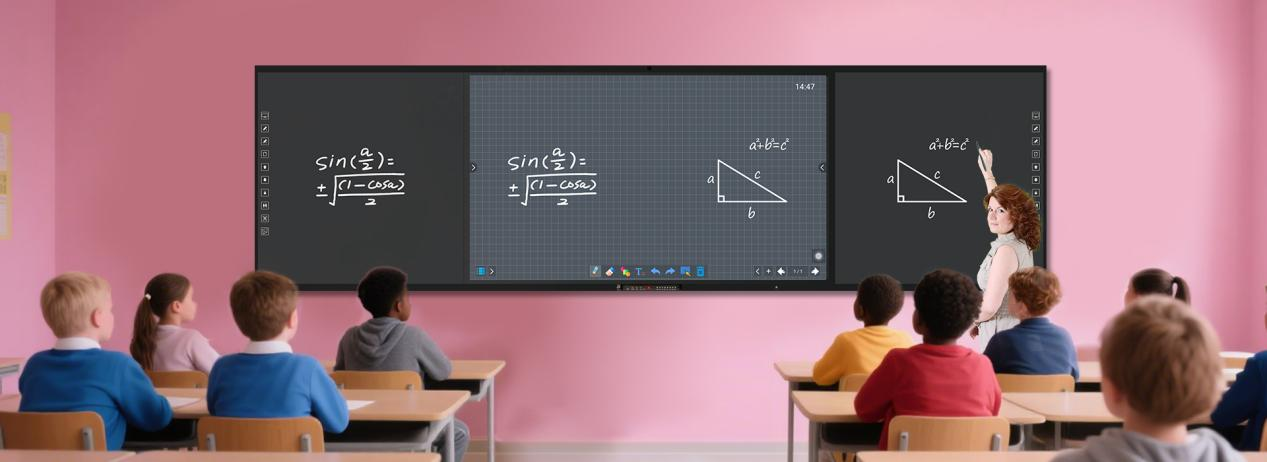- This topic is empty.
-
AuthorPosts
-
10/07/2025 at 18:09 #4232
As global education enters a critical phase of digital integration, interactive displays—commonly termed "smart boards"—have emerged as the operational core of next-generation classrooms. Far beyond replacing chalkboards, these advanced systems now serve as central hubs connecting teachers, students, and digital resources, fundamentally redefining teaching methodologies while addressing persistent challenges in educational equity and efficiency. In this blog post, as a high performance LED interactive board manufacturing factory, Orgscreen will share the application advantages of high quality smart boards for sale.
The Shift from Tool to Ecosystem

Early digital boards functioned primarily as presentation tools. Today' s smart boards represent integrated ecosystems. Their ability to combine real-time annotation, cloud-based resource access, multi-device collaboration, and instant assessment tools creates a dynamic pedagogical environment. Teachers transition from lecturers to learning facilitators, guiding students through interactive problem-solving sessions where handwritten equations transform into 3D models and history timelines become immersive explorations.
Addressing Core Educational Challenges
Three critical gaps in modern education are being bridged:
1.The Engagement Gap:
Studies indicate interactive visual learning boosts retention by up to 65%. Smart boards turn abstract concepts into manipulatable objects—students dissect virtual frogs in biology or plot quadratic equations through gesture controls, sustaining attention in distraction-prone generations.
2.The Accessibility Gap:
Cloud integration enables seamless continuity between physical classrooms and remote learners. A student absent due to illness can participate live or review annotated lessons later. Translation features and adjustable interfaces further democratize access for diverse learners.
3.The Data-Action Gap:
Embedded analytics transform teaching from intuition-driven to evidence-based. When 70% of a class struggles with a calculus problem displayed on the board, the system alerts the teacher instantly. Lesson pacing adjusts dynamically, while automated grading frees educators for personalized interventions.
Future-Proofing Classrooms
The true strategic value lies in scalability. Unlike single-function devices, modern smart boards serve as open platforms:
1.AI Integration: Future updates could enable real-time language coaching during presentations or adaptive learning pathways generated during lessons.
2.IoT Connectivity: Linking with lab sensors, building systems, or AR headsets creates unified smart-campus experiences.
3.Sustainability Impact: Eliminating consumables (markers, paper) supports institutional carbon-reduction goals while reducing long-term costs.
Implementation Insights
Successful transitions share key approaches:
1.Pedagogy-First Training: Teachers need support to redesign lesson plans around interactivity—not just board operations.
2.Iterative Upgrades: Schools starting with basic models can later add sensors, cameras, or AI modules without full replacement.
3.Universal Design: Boards must serve diverse abilities—voice control for motor-impaired students, or screen-reader compatibility ensures inclusivity.
Conclusion
As UNESCO' s 2025 Global Education Report notes, "Technology in education succeeds only when it becomes invisible infrastructure." Smart boards achieve this by embedding themselves not as standalone devices, but as the central nervous system of digitally transformed classrooms. Their evolution from presentation surfaces to intelligent teaching platforms positions them uniquely to accelerate learning innovation while preparing institutions for emerging technologies like AI tutors and immersive simulations. The classrooms adopting these systems today aren' t just upgrading hardware—they' re architecting the future of human knowLEDge transfer.
http://www.orgscreen.com
Orgscreen -
AuthorPosts
- You must be logged in to reply to this topic.